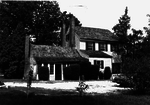White Hall, Prince George's County, Maryland
Prince George's County, Maryland geography stubsUnincorporated communities in MarylandUnincorporated communities in Prince George's County, Maryland
White Hall is an unincorporated community in Prince George's County, Maryland, United States. White Hall is located 2.5 miles (4.0 km) northeast of Accokeek.
Excerpt from the Wikipedia article White Hall, Prince George's County, Maryland (License: CC BY-SA 3.0, Authors).White Hall, Prince George's County, Maryland
April Street,
Geographical coordinates (GPS) Address Nearby Places Show on map
Geographical coordinates (GPS)
| Latitude | Longitude |
|---|---|
| N 38.686111111111 ° | E -76.988888888889 ° |
Address
April Street 14807
20607
Maryland, United States
Open on Google Maps





